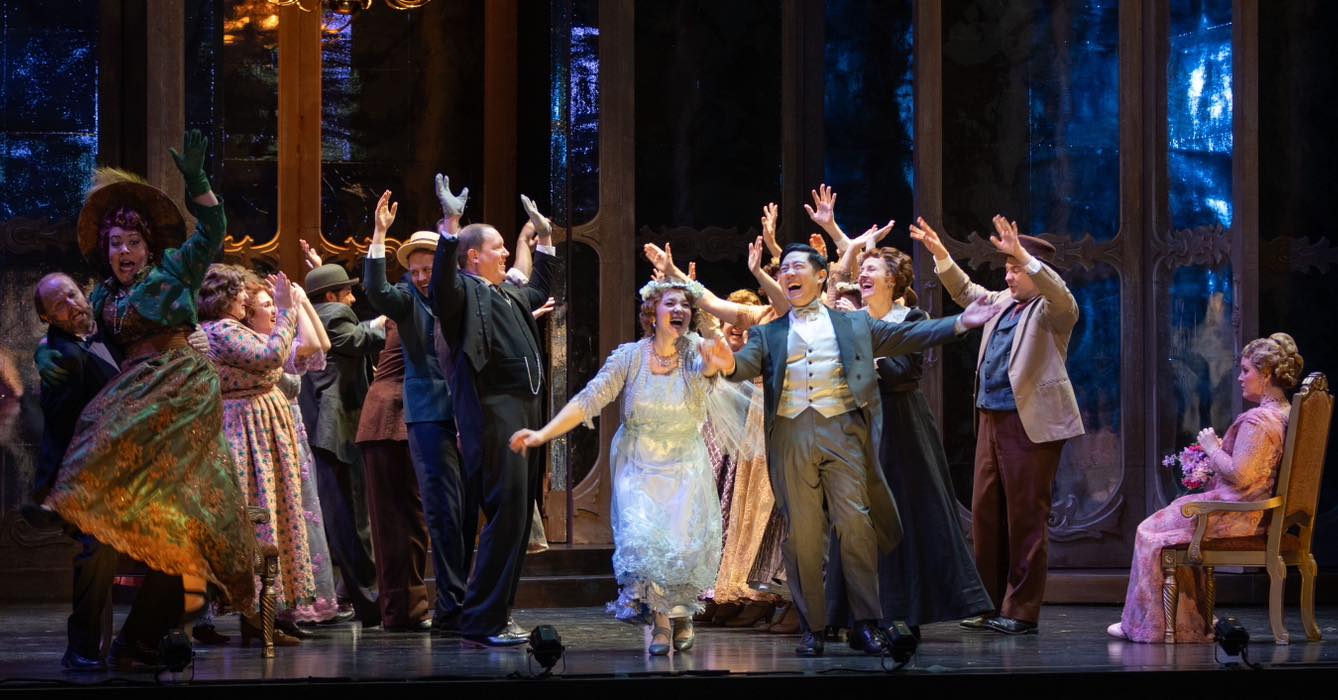SALT LAKE CITY — Mozart’s music is perfection with few pieces more emblematic of this than his 1786 opera The Marriage of Figaro. Mozart had an innate gift to write for the human voice and his compositions for the female voice, especially, are masterful and exquisite. The Marriage of Figaro was in some ways an instant success. Its effervescent overture, its brilliantly crafted arias—which give insights into the personalities of the characters who sing them—and its lively and intricate ensemble scenes won the hearts of nearly all who saw it. At the same time, the opera was controversial. The idea of servants revolting against their masters caused outrage among the aristocracy. The play was even banned in Mozart’s own home of Vienna for a period of time. Utah Opera’s new production of The Marriage of Figaro at the Janet Quinney Lawson Capitol Theatre is nearly as perfect as the composition it celebrates.
The opera is based upon the 1775 play by Beaumarchais and serves as a sequel to The Barber of Seville. The Marriage of Figaro, also called A Day of Follies, follows the Italian neoclassical unities as the story is set over the course of just one day; Figaro’s wedding day. The curtain rises on Figaro and bride-to-be Susanna, fitting out the new room that their master Count Almaviva has given them. Susanna reveals that the only reason the Count has made such a generous gift is to keep her nearby – he plans to seduce her, re-instating the lately abolished ‘feudal right’ which allowed a lord to have his way with a servant girl on her wedding night. Figaro is furious, and vows to outsmart the Count. Together with Susanna, the forsaken Countess, and the page boy, Cherubino, put in place a cunning plan to ensnare him with disguises, mistaken identities, and a lot of hiding. For centuries, hilarity has ensued.
On opening night, the audience got a taste of why live theatre is so immediate compared with other mediums. Adam Lau, who plays Figaro, was under the weather and unable to sing. U.O. flew in another Figaro, incredible baritone Zachary Nelson, who sat on the side of the stage and sang while Lau performed and lip-synced the songs. Though I was disappointed not to hear Lau, Nelson was masterful! The voices were superb and consistent throughout the cast, as was the acting. Opera in the last 15-20 years has turned to a more realistic rather than presentational performance style and it’s a welcomed evolution. The actors were fun, engaging, and drew us into the story with dexterity and skill.
Madison Leonard, a 2018 winner of the Metropolitan National Council Auditions, is delightful as Susanna. Leonard is an enjoyable and believable love of Figaro’s life. Her presence and characterization were exquisite with a clear and bright lyric-coloratura soprano that reverberated through the theatre. Given the technical prowess of his work, Mozart’s operas can be a bear to sing, and Leonard makes it seem effortless.
Michael Adams was engaging as Count Almaviva the over-sexed Lord of the Manor. He presents well as he is handsome and engaging. Adams’ rich baritone is tantalizing to the ears, and he is able to use this tool as he conveys the wickedly delightful count. Adams plays the count with contrasting efficacy. He can be lecherous and seductive, charming yet abhorrent as he tries to bed sweet Susanna against her will. The play is enriched by Adams’ commitment to the evil of the character. Katherine Whyte is lovely as Countess Almaviva the count’s long-suffering wife. Her voice is rich and full, able to exploit Mozart’s music with agility. She did have a slight blip in her aria, “Dove Sono I Bei Momenti” but deftly got back on track. Her duet with Leonard, “Che Soave Zeffiretto” is a highlight of the production as the two harmonized and acted together so well. Though it’s a very short duet, clocking in at under three minutes, it is exquisite.
Utah Opera’s live music is always a treat. The orchestra conducted by Conner Gray Covington was impeccable, as usual, and elevated an already exceptional score. The synchronization between actors and orchestra allowed performers to embellish and be present in the moment but allowed the musicians to stay under the singers. Tara Faircloth‘s direction added richness to the comedic elements of the opera. Her staging of this mammoth farce was without fault, each scene creatively and seamlessly flowing into the next. She found ways to utilize the actors skillsets to play with different moments that served the contemporized acting style. Her blocking and business were inventive and precise which allowed her cast to flourish and there was a strong chemistry between them which is a clear win for the actors.
I was not impressed by the set, rented from Arizona Opera, which was constructed with over 90 mirrors, and looked poorly made. Instead of enhancing the performance, the mirrors were distracting and reflected the lights badly. I was also uncertain about the choice to use more contemporary looking costumes for the Countess Almaviva. They seemed entirely out of period. These technical miscues were overshadowed by strong performance, but prevented me from truly loving the performance.
Figaro is a timeless piece. The the tale lampooning the upper classes and their disdain for the poor is a story that has been told in a myriad of ways. The tropes are elevated by a marvelous score and in the case of Utah Opera, a fantastic cast of performers who enhance the show.
[box] Mozart’s The Marriage of Figaro plays on select dates through Sunday, March 17th at the Janet Quinney Lawson Capitol Theatre (50 West 200 South, Salt Lake City). Tickets are between $25-$99. For tickets go to the Utah Opera website: https://usuo.org [/box]

